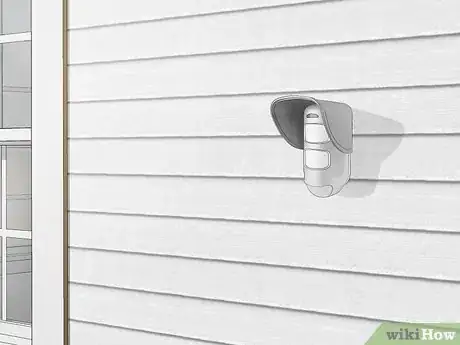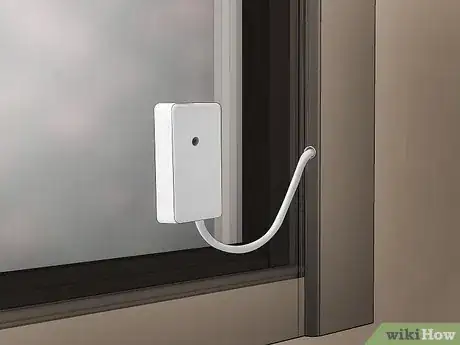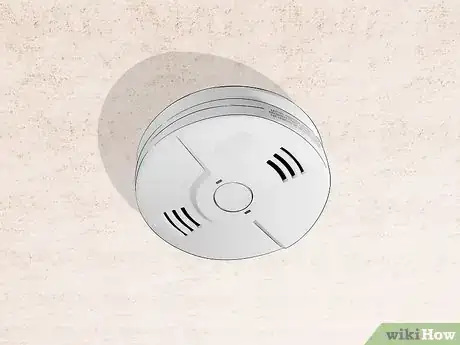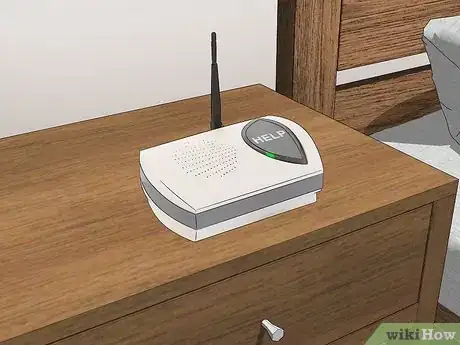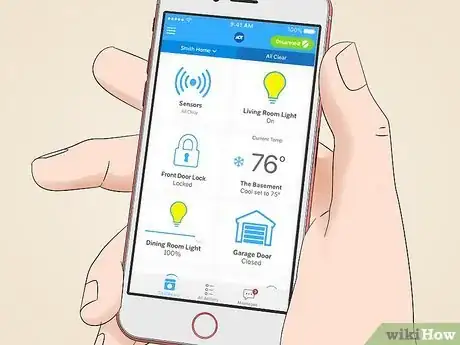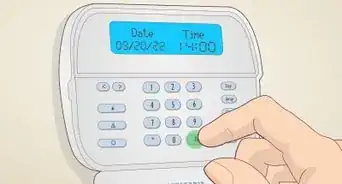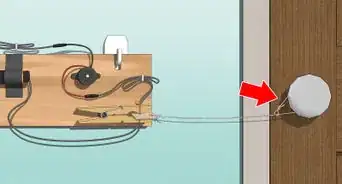This article was co-authored by Saul Jaeger, MS. Saul Jaeger is a Police Officer and Captain of the Mountain View, California Police Department (MVPD). Saul has over 17 years of experience as a patrol officer, field training officer, traffic officer, detective, hostage negotiator, and as the traffic unit’s sergeant and Public Information Officer for the MVPD. At the MVPD, in addition to commanding the Field Operations Division, Saul has also led the Communications Center (dispatch) and the Crisis Negotiation Team. He earned an MS in Emergency Services Management from the California State University, Long Beach in 2008 and a BS in Administration of Justice from the University of Phoenix in 2006. He also earned a Corporate Innovation LEAD Certificate from the Stanford University Graduate School of Business in 2018.
This article has been viewed 14,606 times.
Assembling a wireless home security system is as simple as putting together a basic LEGO set. All you have to do is install things in the right order, and everything will come together in the end. Here you will find a step by step guide on how to install a wireless home security system. Let's have a look at them:
Steps
-
1Set up the door and window sensors. Doors and windows are vulnerable areas of your house or apartment through which a burglar can break in.[1] Once you attach these sensors the corner of your doors or windows, they'll be able to detect whenever your access points are open. Your door and window sensors keep you safe when you're at home during the day and moving around your house.
- The door sensor comes in 2 pieces – the bigger half is a wireless transmitter and the tinier piece is a magnet that completes the circuit. As soon as the door unlocks, the circuit is broken & an alarm jingles.
- As a substitute, you can put a motion sensor in every room, and then if anybody attempts to get in via the window, an alarm will be transmitted to the control panel.
-
2Set up the motion sensors. Motion sensors serve a slightly different role: protecting your home when you're asleep or not physically inside it. Passive infrared motion sensors operate by sensing a change in temperature. Avoid pointing them in the direction of windows where the heat of the glass varies throughout cold and hot periods.
- Though these sensors employ infrared technology to distinguish body temperature, small dogs will not have an effect on their function since the sensors aren't efficient enough to identify a body weighing less than forty pounds. Consider using door and window contacts instead if you have a large dog or cat, as these might trip motion sensors.
- To set up the motion detector, first pick a location with a clear sight of the whole room. Utilize the mounting plate as a pattern to mark navigator holes, and affix the sensor to a firm base – employ drywall anchors in empty wallboard.
Advertisement -
3Set up glass-break sensors. These can detect when an intruder breaks a window to try to get into the house. The frequency of the glass break triggers the sensor and sounds the alarm.
-
4Set up monitored smoke/heat and CO detectors. Unlike the smoke detectors that are already installed in your house, monitored smoke/heat and CO detectors can detect some of the earliest signs of a fire. Once one of these sensors trip, the fire department will be called.
-
5Set up CCTV. CCTV can help police and/or fire officials determine if there was a break-in or what caused a fire, so you can install sensors in weak areas of your home.
-
6Set up a medical alarm. A medical alarm involves fall sensors, medical pendants, and a main central intercom that can notify the fire department that an ambulance is required. These are only necessary if you are living with seniors or have certain medical conditions.
-
7Install water sensors. If any of your pipes break or freeze, you can be alerted so that you can reduce water damage. They can also switch off the electricity to prevent electrocution.
-
8Program the control panel. After all the sensors are installed, program the control panel. Plug the controller into an electric outlet and a land line, if necessary.
- Pursue the system's programming methods cautiously – if you make any error, you may have to do again the whole progression. As soon as the system is programmed, it'll jingle an alarm if a sensor is triggered, and it'll call to aware you.
- Turn on the window and door sensors while you move to bed, or depart the home. The water detector, freeze detector and smoke detector are always triggered.
- Several systems offer a keyfob remote control that users can carry and utilize to trigger the system with just a tap of a switch.
- Also make sure that you set up monitoring so that you can get a response. Popular monitoring solutions include ADT, SimpliSafe, Ring, Nest, etc.
References
- ↑ Saul Jaeger, MS. Police Captain, Mountain View Police Department. Expert Interview. 21 February 2020.
- ↑ https://www.asecurelife.com/security-sensor-installation/


